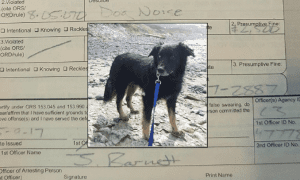“This post contains affiliate links, and I will be compensated if you make a purchase after clicking on my links.”

When a dog barks, it can have various meanings depending on the situation. Dogs use vocal communication to express their feelings and barking is one of the main forms that they use.
By listening to a specific bark, many owners can tell what their dogs want. One easy way to decode their bark is by listening to the pitch of the sound. Friendly communication is done with high-pitched barking. Possibly when playing or when the dog is excited. On the other hand, a low-pitched bark or growl is intended to signal danger, territoriality, or even aggressiveness. However, your dog’s size also plays a role in this. Smaller dogs might not be able to bark at a lower pitch.
If you’re one of the dog owners who face excessive barking in their household, it’s critical to understand why he is doing it in the first place in order to start treating it. But keep in mind that certain dogs tend to bark more frequently than others, while some dogs rarely bark. Here are a few reasons why a dog barks:

Pain Bark
Dogs sometimes bark when they are in discomfort or experiencing a painful condition. Increased vocalization is one indicator of pain in dogs. A sudden rise in vocalizations such as whining, growling, barking, or other sounds should be watched out for. Dogs that are experiencing pain tend to be more vocal.

Alarm Bark
This may be the most frequent dog bark, alerting you to the presence of anything or someone outside. The closer the threat is and the greater the threat your dog senses, the lower the pitch. As a result, the bark may begin as a quick succession of 2-3 mid-pitched barks, then as the threat approaches or becomes more severe, the bark may change to 3–4 low-pitched barks. Because it is triggered by sights and noises, alarm barking is quite similar to territorial barking. For example, a dog barks aggressively to mark his territory when he sees an approaching stranger and will typically only do so when he is in his own house, yard, or vehicle.

Boredom Bark
Some dogs only bark excessively in frustrating situations, such as when they can’t get to their playmates or when they’re restrained and have limited movement. And they don’t just resort to barking. Boredom can lead to destructive behavior, so make sure you do something when you hear them barking out of boredom. With more activity to stimulate him physically and mentally, you can stop this behavior. The best way to stop a bored dog from barking is to teach him to regulate his impulsive behavior through obedience training.

Fearful Bark
Any sound or object that catches their attention or startles them can cause some dogs to bark and it’s not just in their territory where this can happen. When dogs are afraid, their barking can be loud and continuous, which can sometimes be upsetting to people around them. Along with the bark, you can see fear in their body language. Fear can be recognized by a rigid torso, retracted ears, and tight lips. A terrified dog will frequently run away, turn and bark, then come closer, run away once more, turn, and face the threat.

Fun Bark
Compared to anxious dogs, happy dogs typically bark less frequently and at a higher pitch. Fun barking typically occurs when your dog sees visitors at the door or other dogs while out for a stroll. Your dog is likely barking to say hello if his tail is wagging and other friendly behaviors are present along with the barking. Additionally, he displays a calm demeanor. They most likely want to play with the new dog or people it meets. Moreover, when you play fetch, tag, or any other game with your dog, they appear to adopt a uniform posture and bark accordingly. The sound, which is often referred to as a stutter bark, is typically high-pitched.
And there you have it! But remember to have your dog inspected by a veterinarian for any excessive barking to rule out any underlying medical conditions before attempting to address the barking issue.























